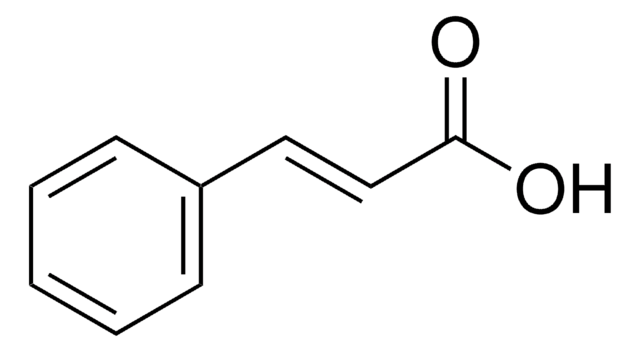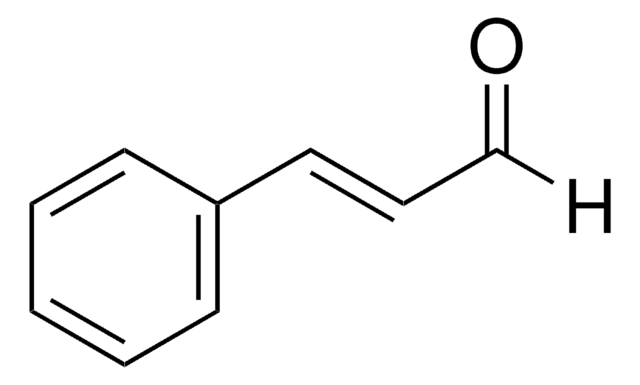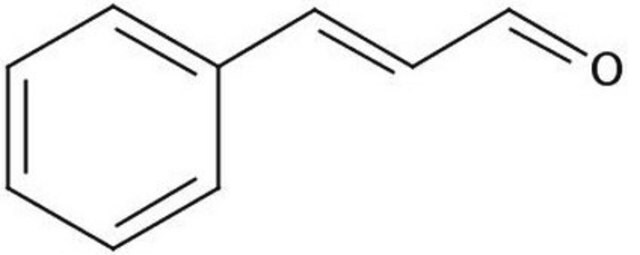06536
trans-Cinnamaldehyde
analytical standard
Synonim(y):
trans-3-Phenyl-2-propenal
About This Item
Polecane produkty
klasa czystości
analytical standard
Poziom jakości
gęstość pary
4.6 (vs air)
Próba
≥95.0% (GC)
okres trwałości
limited shelf life, expiry date on the label
metody
HPLC: suitable
gas chromatography (GC): suitable
współczynnik refrakcji
n20/D 1.622 (lit.)
tw
250-252 °C (lit.)
mp
−9-−4 °C (lit.)
gęstość
1.05 g/mL at 25 °C (lit.)
Zastosowanie
cleaning products
cosmetics
flavors and fragrances
food and beverages
personal care
format
neat
temp. przechowywania
2-8°C
ciąg SMILES
[H]C(=O)\C=C\c1ccccc1
InChI
1S/C9H8O/c10-8-4-7-9-5-2-1-3-6-9/h1-8H/b7-4+
Klucz InChI
KJPRLNWUNMBNBZ-QPJJXVBHSA-N
Szukasz podobnych produktów? Odwiedź Przewodnik dotyczący porównywania produktów
Powiązane kategorie
Zastosowanie
- Pharmacological Activity in Metabolic Diseases: Cinnamaldehyde is investigated for its potential to attenuate diabetic osteoporosis in a rat model, mediated through the modulation of the netrin-1/DCC-UNC5B signaling pathway. This suggests its applicability in therapeutic strategies against metabolic bone diseases (Ji et al., 2024).
- Antibacterial and Biofilm Inhibition: The study reviews the inhibitory effects of natural compounds, including cinnamaldehyde, on the quorum sensing systems of Pseudomonas aeruginosa. This indicates its potential role in managing biofilm communities, which could be crucial for developing new antibacterial strategies (Shariati et al., 2024).
Opakowanie
Inne uwagi
Hasło ostrzegawcze
Warning
Zwroty wskazujące rodzaj zagrożenia
Zwroty wskazujące środki ostrożności
Klasyfikacja zagrożeń
Eye Irrit. 2 - Skin Irrit. 2 - Skin Sens. 1 - STOT SE 3
Organy docelowe
Respiratory system
Kod klasy składowania
10 - Combustible liquids
Klasa zagrożenia wodnego (WGK)
WGK 3
Temperatura zapłonu (°F)
159.8 °F - closed cup
Temperatura zapłonu (°C)
71 °C - closed cup
Choose from one of the most recent versions:
Masz już ten produkt?
Dokumenty związane z niedawno zakupionymi produktami zostały zamieszczone w Bibliotece dokumentów.
Klienci oglądali również te produkty
Nasz zespół naukowców ma doświadczenie we wszystkich obszarach badań, w tym w naukach przyrodniczych, materiałoznawstwie, syntezie chemicznej, chromatografii, analityce i wielu innych dziedzinach.
Skontaktuj się z zespołem ds. pomocy technicznej








